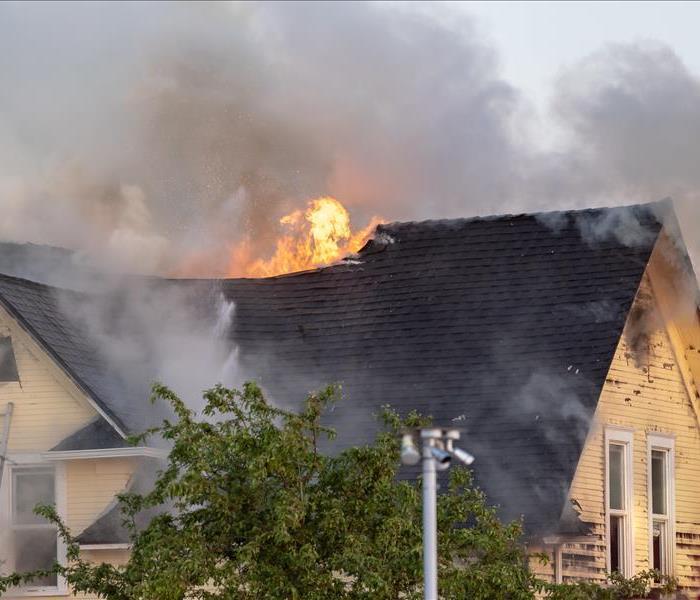After the Fire
5/11/2020 (Permalink)
In a complex fire (where plastics are burned), the acid gasses combine with heat and water vapor and penetrate cracked and crevices.
When the surfaces cool, the gasses form highly corrosive solutions. These solutions can permanently etch and stain many sensitive surfaces including machinery, and tools, precision instruments, and household appliances, plus marble, glass and aluminum surfaces. In addition, salts are produced when acids mix with metal and can cause further damage to a metal surface, like the corrosion on cars from salt snow and ice treatments. Fast and proper fire damage restoration service is highly recommended.
Another common product of fire is soot, which is comprised of carbon and other materials, that are completely burned or oxidized. Some soot particles are dry and can be vacuumed effectively, but most are combined with grease and oils and cannot be vacuumed. These situations require and alkaline solution that reacts with the oil or grease and release particles, creating a water soluble product that can be washed away with water.
Other soot deposits, depending on their chemical make-up and the surface on which they rest, may demand physical removal with a putty knife or similar instrument.
Even though the chemistry of fires may vary, the most important thing is to dry out the area as soon as possible to avoid further damage caused by acids and contaminants. A careful consideration of the materials and surfaces affected will then provide and understanding of the fire’s chemistry and allow for a targeted and informed restoration effort.






 24/7 Emergency Service
24/7 Emergency Service
